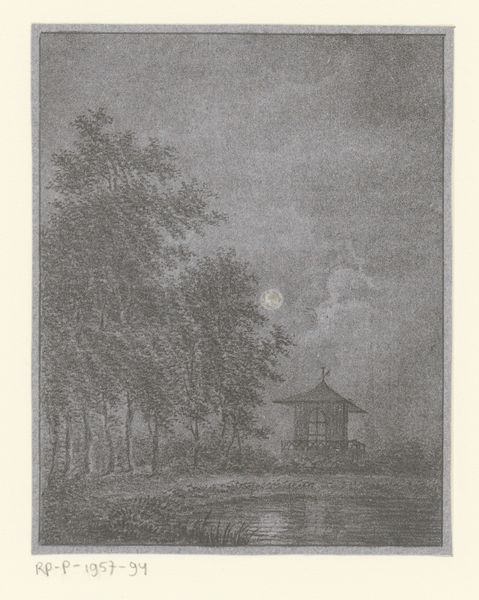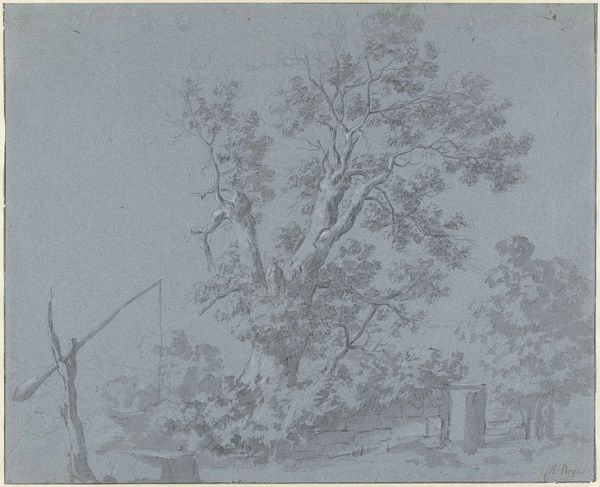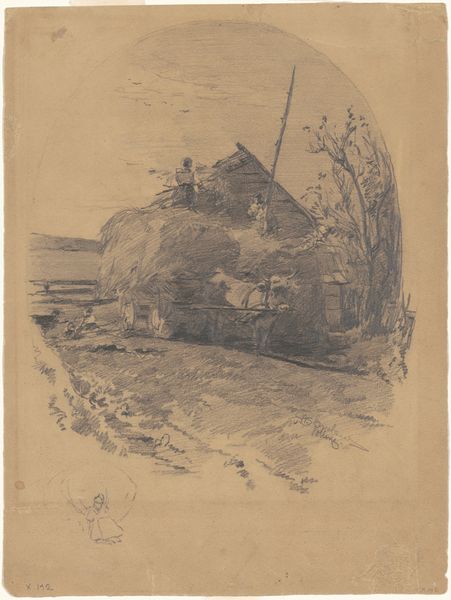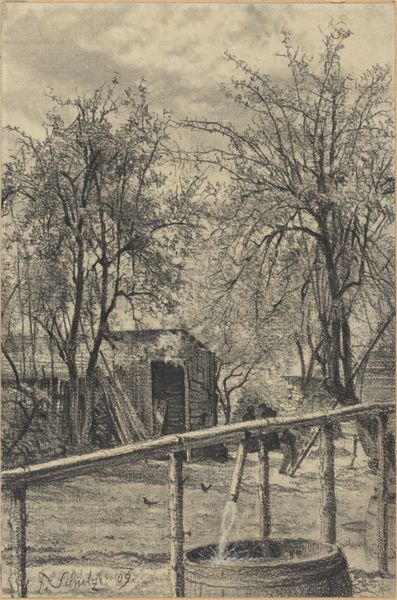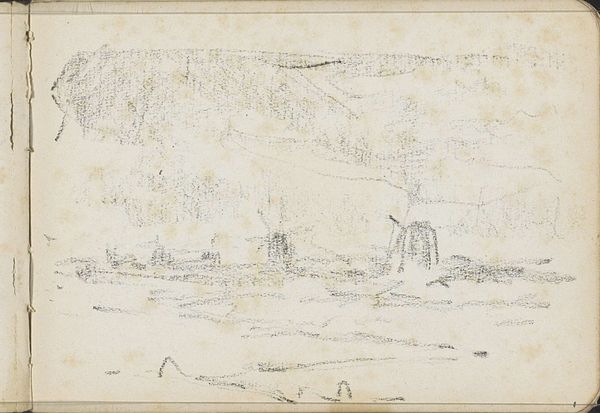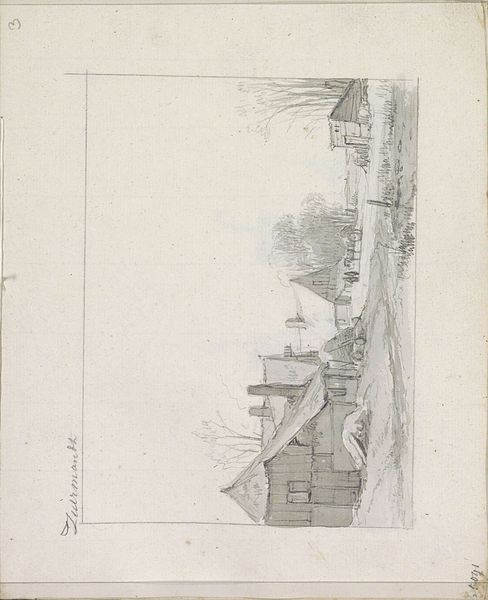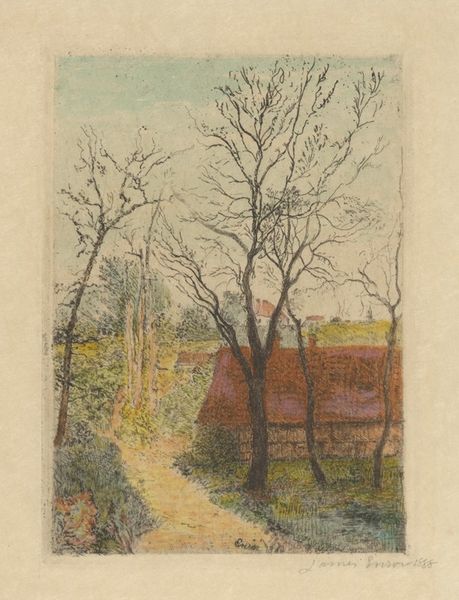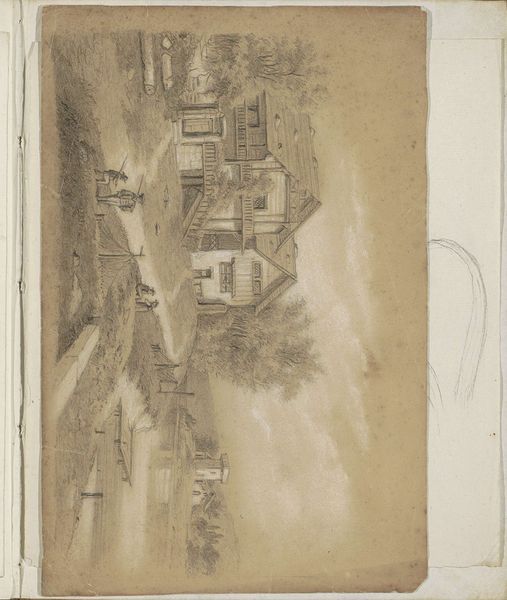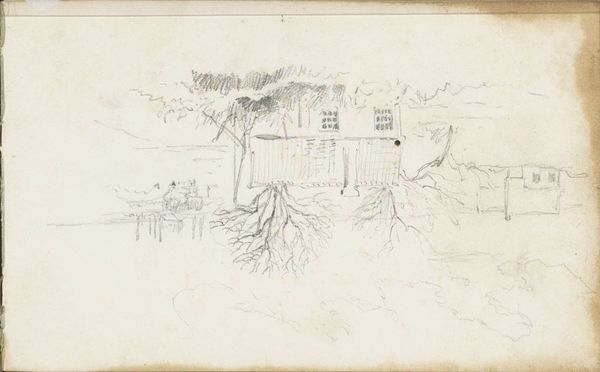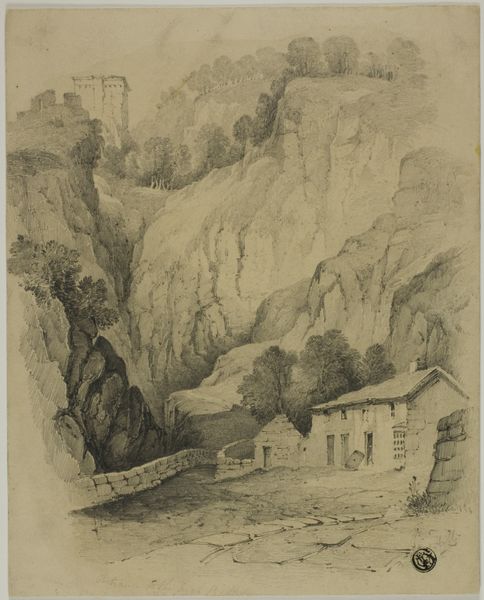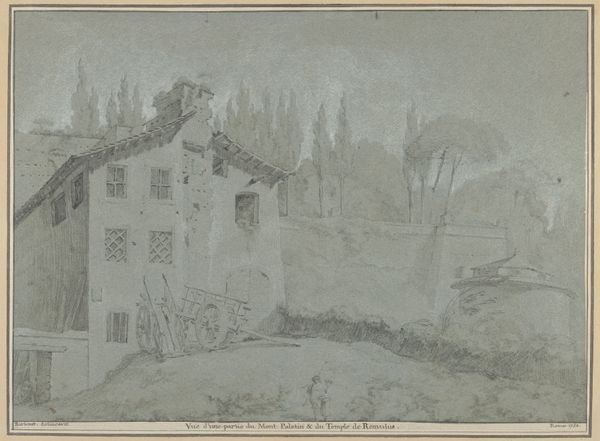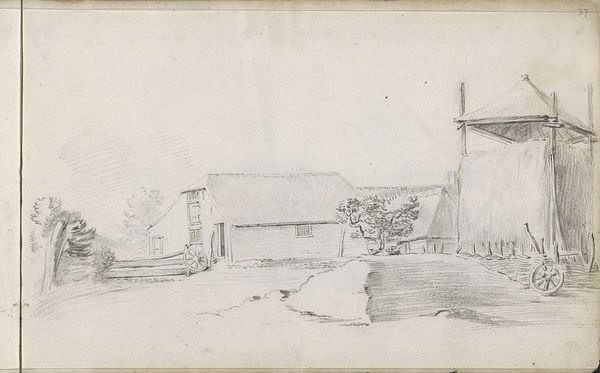
drawing, pencil
#
drawing
#
dutch-golden-age
#
pencil sketch
#
landscape
#
form
#
mountain
#
pencil
#
line
#
cityscape
#
realism
Dimensions: height 247 mm, width 193 mm
Copyright: Rijks Museum: Open Domain
Curator: Here we have "Huis in een berglandschap", or "House in a Mountainous Landscape," a pencil drawing dating from around 1640-1660 by Angeluccio. Editor: The overall impression is one of serene isolation. The stark contrasts, the lines almost vibrate, creating an intimate and contemplative atmosphere despite the large scale of the depicted mountain landscape. Curator: Absolutely, and situating Angeluccio's work within the Dutch Golden Age, it's fascinating to consider the rise of landscape art as a reflection of burgeoning national identity and perhaps even a commentary on land ownership and social hierarchies. How does this resonate with you from a material perspective? Editor: Well, focusing on the process, one sees the almost frantic pencil strokes and crosshatching; it conveys not only spatial depth but also speaks volumes about the labor, the physicality, of art-making itself. The mountains become not just scenery, but a terrain crafted stroke by stroke. The choice of pencil elevates what might be seen as sketching or a preliminary medium to the finished work. Curator: The choice of medium invites considering accessibility, too. Unlike oil paintings, drawings were relatively more accessible. Were these images created for a bourgeois clientele or did Angeluccio maybe circulate these works to a wider public through printmaking, thereby broadening access to representations of idealized landscapes? It touches upon socio-economic dynamics embedded in art production. Editor: Exactly! And the detail focused on the small, quaint structure challenges conventional distinctions between high art and everyday experience. It's almost like the drawing celebrates mundane rural existence, positioning this house as integral to the whole panorama. Curator: Perhaps even romanticizing that rural existence! How interesting, considering the rapid urbanization happening at the time. Was this perhaps then a projection of certain desires? Editor: Yes! Considering the gray tones throughout, the house and surrounding land seem equally muted by the pencil material. One might even suggest Angeluccio purposefully ignored or perhaps flattened traditional perspectives that centered land owners to provide a more comprehensive look at a burgeoning landscape as capital. Curator: I concur. It certainly opens up thought-provoking discourse about land use, landscape's function as a symbol and the evolving status during this pivotal period. Editor: Indeed, looking closer to these pencil strokes enables reflection on broader concepts surrounding production. Curator: And it challenges assumptions to examine landscapes through social issues pertaining ownership, identity and socio-economic hierarchies. Editor: Exactly. Artworks hold such fascinating complexities and nuance that really make them worth pondering.
Comments
No comments
Be the first to comment and join the conversation on the ultimate creative platform.
